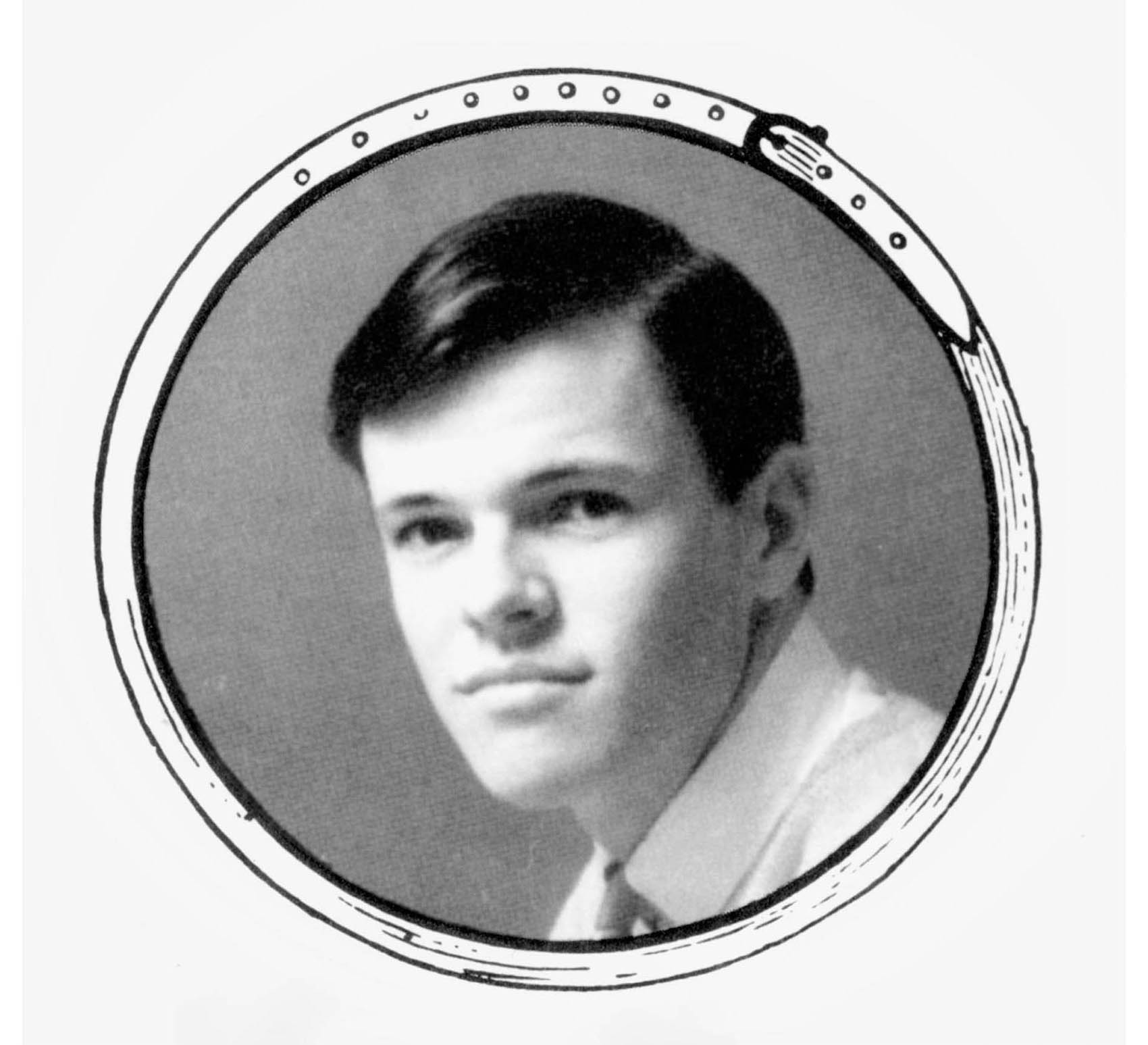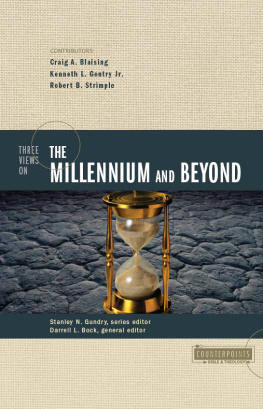
FOR ANJA

Table of Contents
Guide
Swim Through the Darkness

Craig Smith, 1964.

Chip Douglas, 1967 (Photo: Henry Diltz)
I remember very clearly the first time I saw Craig Smith. It was in 1967 at RCA Recording Studios in Los Angeles. Mike Nesmith of the Monkees introduced us. He was producing Craig at the time, and I was producing the Monkees. Mike wanted me to listen to one of Craigs songs, which became part of the Monkees Pisces, Aquarius, Capricorn and Jones Ltd. album. I was struck by Craigs young clean-cut good looks and that beautiful dazzling smile of his. He was so full of life and so full of music. What a great future this lad seemed to have before him.
It was about six years later that I last saw him, and it came as quite a shock. My friend Henry Diltz and I had stopped into a music store on Ventura Boulevard in the San Fernando Valley area of Los Angeles and this fellow walked in off the street with a copy of his album under his arm, which he offered to sell for five bucks. He had the look of someone who had definitely dropped out, all the way. His hair was long and scruffy, and there was a spider tattooed on his forehead right between the eyebrows.
I had no idea who he was. He recognized me however and told me his name, but added that he now called himself Maitreya. The transformation was simply unbelievable. What could possibly have happened to that wholesome kid with the bright future?
Mike Stax has spent fifteen years gathering interviews and information. What follows is a searching account, disturbing yet sympathetic, of the life of this talented singer-songwriter and performer who underwent a strange drug-induced psychotic transformation from wholesome, smiling, nice kid, raised in a good home in California, to spending the last thirty years of his life a homeless, unkempt wanderer on the streets of Los Angeles.

Craig Smith, 1963.
F or rock music fans, the acid casualty is a cherished archetype. Syd Barrett, Roky Erickson, and Skip Spence are the three best-known examples. Psychedelic voyagers who sailed too close to the edge only to plunge into a permanent Alice in Wonderland world. Eccentric, childlike creatures or mystical shamans, stuck in a looped alternative reality that is forever 67, 68, 69, the moment of their fall.
But when that carefully constructed fantasy is disassembled and the cold facts are laid bare, theres no romance to be found. Only pain, confusion and misery. An undiagnosed predisposition toward mental illness, often hereditary, triggered by an overindulgence in hallucinogens, exacerbated by the tenuous, often chaotic nature of a musicians lifethe facts are strikingly similar in every case.
In the case of Craig Smith, there were other factors that contributed to his fall, as I learned when I investigated the story of his strange, complicated, and ultimately tragic life. Its a story that took me over 15 years to assemble yetto my eternal regretwill never be entirely complete. It is a story that begins in the safe, wholesome, sticky-sweet heart of American family entertainment and ends on the cold, dark streets at the outside fringes of society.
A s he ambles down Ventura Boulevard, Craig Smith looks very much like a typical homeless personshabby, unwashed clothes, scraggly, unkempt hair, sun-baked skin, and the tired, haunted eyes of a man who checked out of normal society a long time ago. To passersby hes just another of a legion of walking wounded who roam the streets and alleyways of America. To me hes the missing piece of a strange, scattered puzzle Ive been trying to assemble for more than a decade.
The missing piece? Strike that. Craig Smith is the puzzle.
There are an estimated 578,000 homeless people in America; around 82,000 of those are in Los Angeles County, where the climate is more conducive to living rough and sleeping outdoors. Every one of them has a story, though few would have the facility, much less the motivation, to tell it to you. Even if they did, its doubtful any would have a story quite like Craigs. Its hard to believe it now, but once upon a time, everything was golden for Craig Smith. In the 1960s, he was a bright-eyed, all-American boy with a pitch-perfect singing voice and talent to spare. For almost three years, his eight-miles-wide smile beamed out of television sets across America on a regular basis. The songs he wrote were recorded by some of the biggest names in the entertainment business. And he had a rock group of his own, the Penny Arkade, featuring some equally talented young musicians. On the surface everything was goldenuntil his life took a sudden left turn into a terrifying darkness no one could ever have predicted.
In 2012, at the age of 67, Craig Smith should have been living quietly and comfortably on his songwriting royalties, not scraping by in poverty on the unforgiving streets of Los Angeles. How, when and why did it all go so horribly wrong?
Thats the puzzle Ive been trying to piece together, ever since 2001 when I first heard the albums Craig released himself in the early 1970s. But by then he wasnt Craig Smith anymore, he was Maitreya. Satya Sai Maitreya Kali. Privately released in an edition of no more than a few hundred copiesprobably a lot lessthose LPs were called Apache and Inca. Apache appeared as a single LP, and then together with Inca as a double album. The people who knew Craig personally at the time remember it only as a double LP. My own introduction to Apache and Inca came via an unlicensed reproduction on the German Shadoks label.
The amateurish homemade cover artwork was unusual, to say the least, with its quasi-mystical symbolism, incomprehensible liner notes, lists, dedications and quotes from the famous and the infamous. (Underground at Last. Maitreya is. Adam West, Batman.) Along with this confusing flood of words and names are shadowy vacation snapshots from Peru, Brazil, Ecuador, Colombia, Yosemite and the Galapagos Islands of a toothy hippie squinting into the camera or off into the distance. Inside the gatefold cover, more pictures, more cryptic prose, lyrics annotated and interrupted with seemingly random asides and associations. On closer reading, Maitreyas dense, mystical, often disturbing typed notes are a manifesto, peppered with repeated references to Christ, Buddha, Krishna, LSD, sex, violence, meditation, yoga, famous musicians, and a woman called Cheryl.
His real world identity is revealed in the very first sentence of his manifesto: Craig Smith saved the planet, did you? He died for a righteous cause. The manifesto goes on to declare Craig Smith the new Messiah: Bow to Maitreya. Christ is Back. Right On! Schedule. Saturn will Legally wed Earth in 2000 A.D. Christ is me and no one else.
The music then would surely be as rambling, unhinged and unfocused as the words on the cover. Not at all. The songs are focused in crystal-clear symmetry, the musicianship is excellent, the vocals outstanding. The unexpected quality of the music ambushes me. Some of it takes my breath away.
















